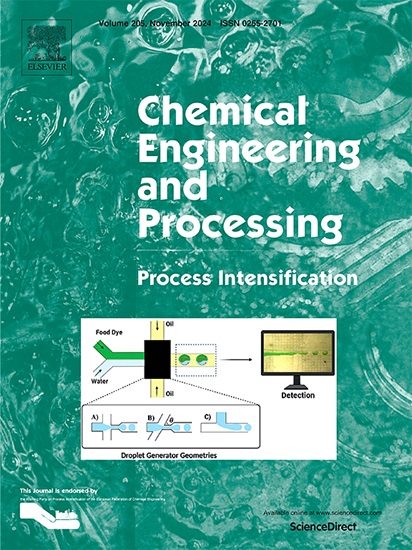Interpretable and uncertainty-aware machine learning for trustworthy prediction in batch crystallization
IF 3.8
3区 工程技术
Q3 ENERGY & FUELS
Chemical Engineering and Processing - Process Intensification
Pub Date : 2025-05-19
DOI:10.1016/j.cep.2025.110350
引用次数: 0
Abstract
Symbolic regression was applied to model the nucleation and crystal growth in potassium sulfate batch crystallization. A methodology combining multivariable analysis, symbolic regression, meta-heuristic optimization, and statistical analysis was developed and compared with an alternative neural network-based approach. Experimental data were used to identify models via symbolic regression for predicting the first four moments of the crystal size distribution (CSD) and to train neural networks for the same purpose. Both methods efficiently modeled the crystallization process, achieving similar mean squared error (MSE) values. Additionally, solute concentration predictions were successful. The models were tested on simulated batches with supersaturation conditions not present in the experimental dataset. Both approaches performed comparably to the population balance model (PBM). However, symbolic regression required fewer parameters than neural networks. Parameter estimation for symbolic regression was done using particle swarm optimization (PSO), and confidence regions were constructed via Fisher’s test, revealing ellipsoidal shapes for most variables. For the zero-order moment, reparameterization achieved well-defined confidence regions. Symbolic regression provided interpretable and generalizable models that describe key phenomena, such as nucleation and crystal growth, aligning with population balance theory. These models offer advantages for modeling, controlling, and optimizing crystallization processes over traditional ODE systems.

批量结晶中可解释和不确定性感知的可信预测机器学习
采用符号回归方法对硫酸钾分批结晶过程的成核和晶体生长进行了模拟。该方法结合了多变量分析、符号回归、元启发式优化和统计分析,并与另一种基于神经网络的方法进行了比较。实验数据用于通过符号回归来识别模型,以预测晶体尺寸分布(CSD)的前四阶矩,并用于训练神经网络。两种方法都有效地模拟了结晶过程,获得了相似的均方误差(MSE)值。此外,溶质浓度预测是成功的。这些模型在实验数据集中不存在过饱和条件的模拟批次上进行了测试。这两种方法的表现都与人口平衡模型(PBM)相当。然而,符号回归比神经网络需要更少的参数。采用粒子群算法(PSO)对符号回归进行参数估计,并通过Fisher检验构建置信区域,大多数变量呈现椭球形。对于零阶矩,重新参数化获得了定义良好的置信区域。符号回归提供了可解释和可推广的模型来描述关键现象,如成核和晶体生长,符合种群平衡理论。这些模型为建模、控制和优化结晶过程提供了优于传统ODE系统的优点。
本文章由计算机程序翻译,如有差异,请以英文原文为准。
求助全文
约1分钟内获得全文
求助全文
来源期刊
CiteScore
7.80
自引率
9.30%
发文量
408
审稿时长
49 days
期刊介绍:
Chemical Engineering and Processing: Process Intensification is intended for practicing researchers in industry and academia, working in the field of Process Engineering and related to the subject of Process Intensification.Articles published in the Journal demonstrate how novel discoveries, developments and theories in the field of Process Engineering and in particular Process Intensification may be used for analysis and design of innovative equipment and processing methods with substantially improved sustainability, efficiency and environmental performance.

 求助内容:
求助内容: 应助结果提醒方式:
应助结果提醒方式:


